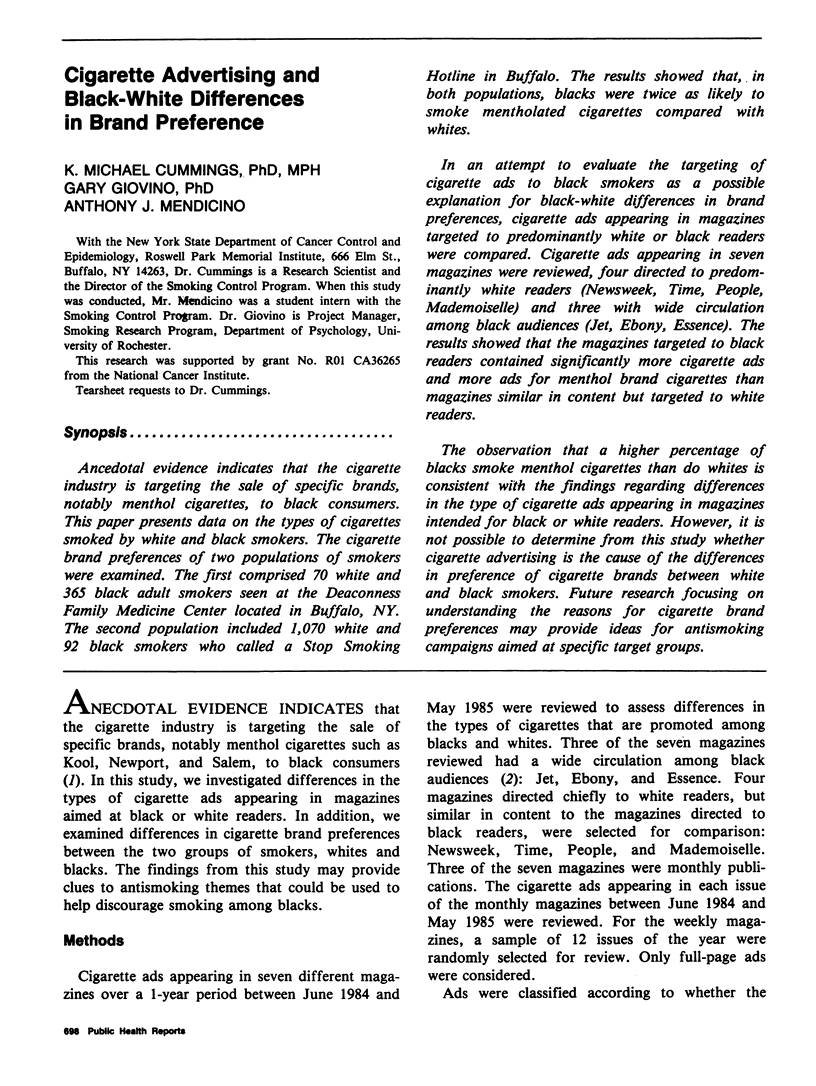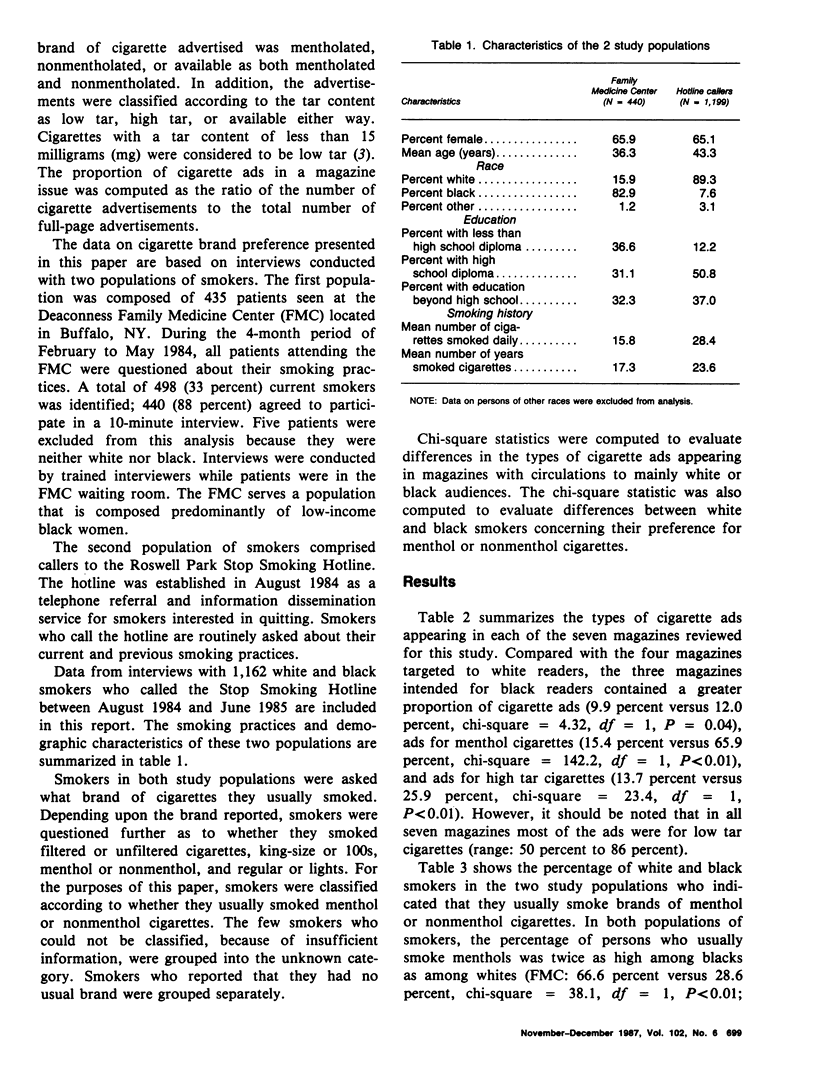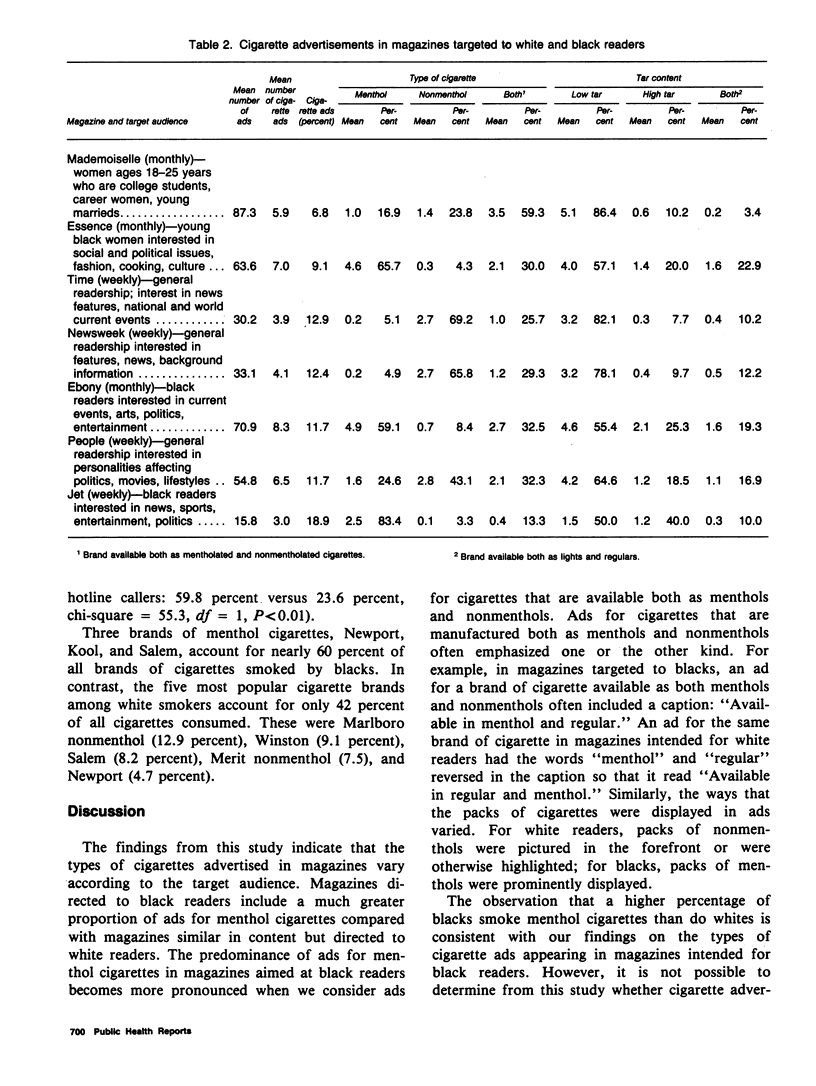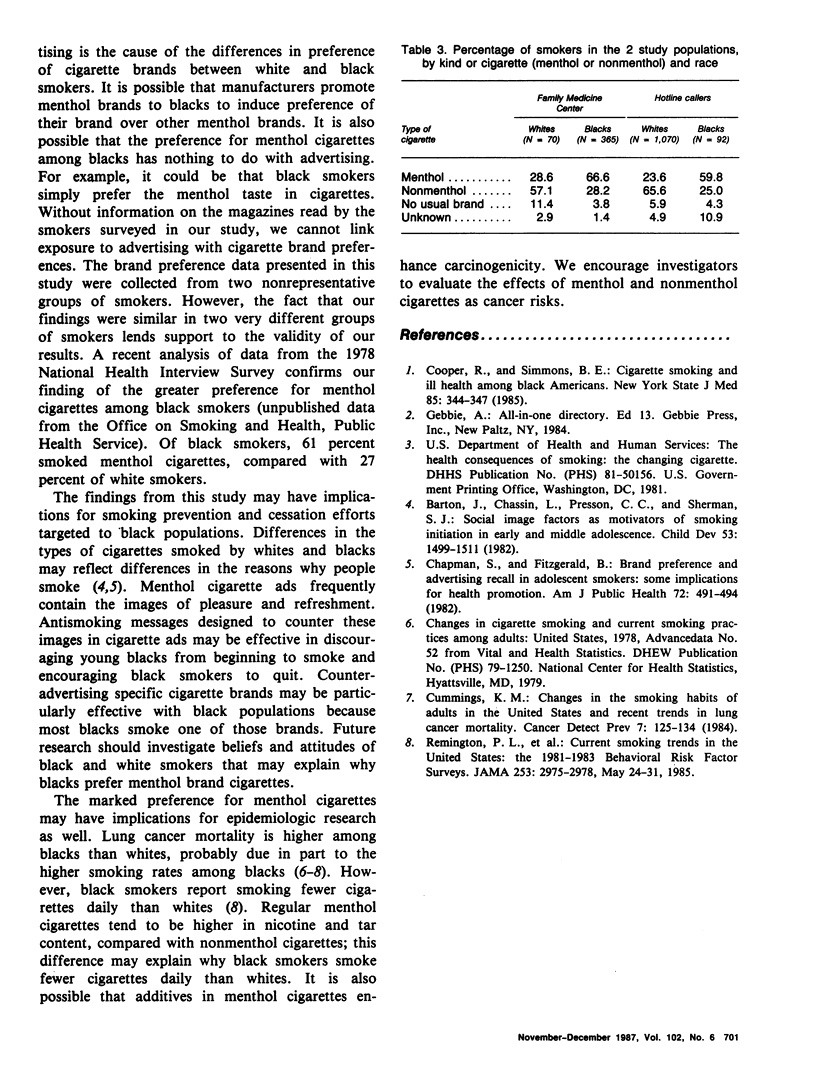Abstract
Anecdotal evidence indicates that the cigarette industry is targeting the sale of specific brands, notably menthol cigarettes, to black consumers. This paper presents data on the types of cigarettes smoked by white and black smokers. The cigarette brand preferences of two populations of smokers were examined. The first comprised 70 white and 365 black adult smokers seen at the Deaconness Family Medicine Center located in Buffalo, NY. The second population included 1,070 white and 92 black smokers who called a Stop Smoking Hotline in Buffalo. The results showed that, in both populations, blacks were twice as likely to smoke mentholated cigarettes compared with whites. In an attempt to evaluate the targeting of cigarette ads to black smokers as a possible explanation for black-white differences in brand preferences, cigarette ads appearing in magazines targeted to predominantly white or black readers were compared. Cigarette ads appearing in seven magazines were reviewed, four directed to predominantly white readers (Newsweek, Time, People, Mademoiselle) and three with wide circulation among black audiences (Jet, Ebony, Essence). The results showed that the magazines targeted to black readers contained significantly more cigarette ads and more ads for menthol brand cigarettes than magazines similar in content but targeted to white readers. The observation that a higher percentage of blacks smoke menthol cigarettes than do whites is consistent with the findings regarding differences in the type of cigarette ads appearing in magazines intended for black or white readers. However, it is not possible to determine from this study whether cigarette advertising is the cause of the differences in preference of cigarette brands between white and black smokers.(ABSTRACT TRUNCATED AT 250 WORDS)
Full text
PDF



Selected References
These references are in PubMed. This may not be the complete list of references from this article.
- Barton J., Chassin L., Presson C. C., Sherman S. J. Social image factors as motivators of smoking initiation in early and middle adolescence. Child Dev. 1982 Dec;53(6):1499–1511. [PubMed] [Google Scholar]
- Chapman S., Fitzgerald B. Brand preference and advertising recall in adolescent smokers: some implications for health promotion. Am J Public Health. 1982 May;72(5):491–494. doi: 10.2105/ajph.72.5.491. [DOI] [PMC free article] [PubMed] [Google Scholar]
- Cooper R., Simmons B. E. Cigarette smoking and ill health among black Americans. N Y State J Med. 1985 Jul;85(7):344–349. [PubMed] [Google Scholar]
- Cummings K. M. Changes in the smoking habits of adults in the United States and recent trends in lung cancer mortality. Cancer Detect Prev. 1984;7(3):125–134. [PubMed] [Google Scholar]
- Remington P. L., Forman M. R., Gentry E. M., Marks J. S., Hogelin G. C., Trowbridge F. L. Current smoking trends in the United States. The 1981-1983 behavioral risk factor surveys. JAMA. 1985 May 24;253(20):2975–2978. [PubMed] [Google Scholar]


